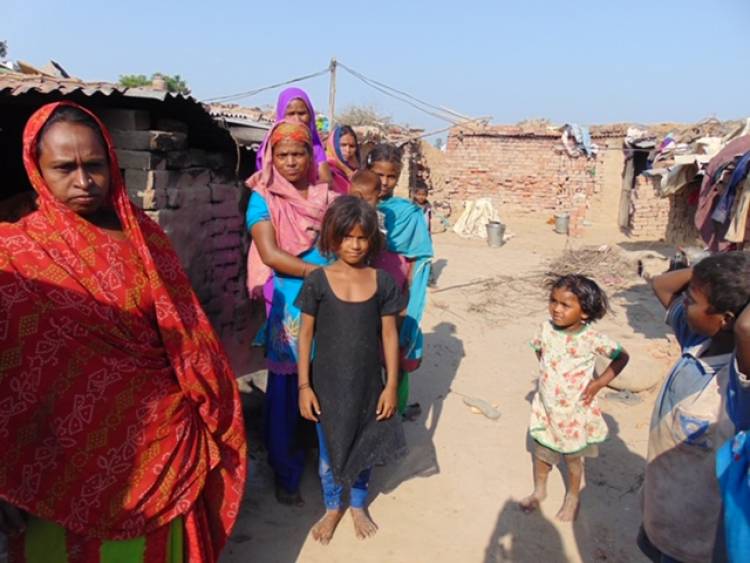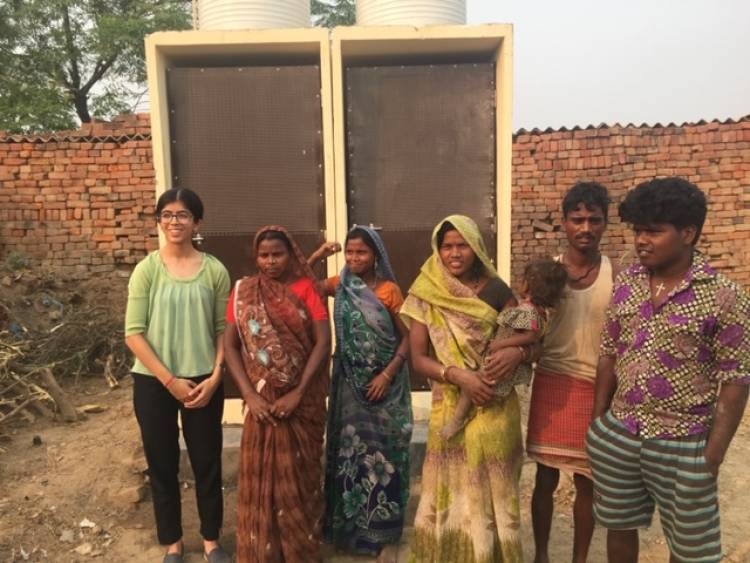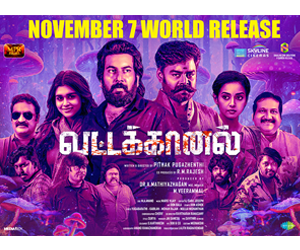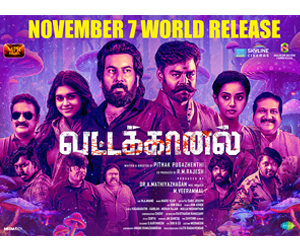A Sanitation Project - Aarambh by a student of Gurugram
Why did I do this project?
My observations about rural women in India made me realize the importance of equality and dignity for a healthy existence. The fact that women have to defecate outdoors has increasingly led to several molestation cases. Such frequent harassment episodes deeply upset me and were the sole incentive behind taking up this initiative. My maternal family belongs to the region around Bagthala and hence the personal connect assisted in selecting it as a suitable site for the toilets. During my visits to Bagthala as a child, was intrigued by the disparity in the lives of people living there. Upon seeking answers to my concerns, I approached my grandfather who encouraged me by saying, “the gap would eventually fade as young people like you start taking initiatives”. I interacted with the women at Bagthala and asked them about the challenges of not having the proper sanitation facilities. In all, eight women were interviewed and each agreed that they have been harassed by stray men while they were defecating. The women’s accounts affirmed how they have become victims to abduction due to the absence of toilets in nearby areas, and the health concerns related to open-defecation. This dearth of toilets that put the well-being of women at risk infuriated me.
How was the funding done?
I registered a Trust in the name of Aarambh to raise funds for the toilet in a transparent manner. A total amount of Rs. 1,00,000 was raised through different fundraising endeavors. While raising funds for the toilets, different means to inform people about my project were explored. My first interaction with the donors was in the form of a speech at a fundraiser that I organized in my local community. Through my speech, I persuaded the donors to contribute towards the making of these toilets, subsequently collecting an amount of Rs. 35,000/-.
However, delivering a speech was an ineffective method of fundraising as it was time- consuming and was only possible in a social gathering. Next, a crowdfunding page was created with the web designing tool Ketto. This was also unsuccessful as not many people viewed the page. Later, I sent an email to my target audience which included everyone on my family’s contact list. This method was highly successful as I got a response from most people. For the purpose of creating and installing the toilets, I collaborated with a design firm Caya who very graciously offered to contribute towards 50% of the total cost of the toilets.
What have you done to make your school or your community a better place?
I trotted along under the scorching sun, closely inspecting the site and wondering whether I would ever be able to install a toilet here. I was confused. The local community at Bagthala did not have access to a toilet. Yet, they did not show the slightest inclination and approval to the idea of installing one. Perhaps, at the time, they thought of me as an intruder with selfish interests.
My maternal family belongs to the region around Bagthala and hence the personal connect assisted in selecting it as a suitable site for the toilets. During my visits to Bagthala as a child, I was intrigued by the disparity in the lives of people living there. Upon seeking answers to my concerns, I approached my grandfather who encouraged me by saying, “the gap between you and these people would eventually fade as young people like you start taking initiatives”. Later, I learnt that women in this community have to defecate outdoors which had increasingly led to several molestation cases. Such frequent harassment episodes deeply upset me and were the sole incentive behind taking up this initiative.
Since people of the community were not comfortable speaking in a larger group at first, I interacted with each one of them privately. I first sat with Sarita and asked her about the challenges of not having the proper sanitation facilities. Her account affirmed how women have become victims to abduction due to the absence of toilets in nearby areas, and the health concerns related to open-defecation. This dearth of toilets that put the well-being of women at risk infuriated me. Sarita also informed me of the norms that her community followed. I learned that the women were bound by social obligations, and were hence submissive by nature.
Hearing their stories motivated me to work harder. Soon, I was able to collect the required funds to facilitate the installation of eco-friendly toilets. For the purpose of creating the toilets, I collaborated with a design firm Caya. Seeing the look of happiness on Sarita’s face after the toilet was installed made me realize the scale of the impact that this venture had had on the lives of these women. In that moment, I decided that I wanted to be able to make a meaningful difference in the lives of many more people.
More information about the project:
The goal of my project was to inquire into the health, environment, and social implications of open defecation. To this end, I facilitated the installation of eco-friendly toilets that will lessen the consequences of open defecation in a suitable village by raising Rs. 100,000 by creating a Trust.
The action began with inquiring into the impact on the health of people and the environment with outdoor defecation. This was followed by educating the rural women about the major threat posed to their safety, security, and dignity due to the absence of toilets. With this, I visited an Indian village that welcomed a decision for a toilet to be installed.
Next, I registered the Trust – Aarambh – to raise funds for the toilet in a transparent manner. Subsequently, ensured that ecological toilets were installed and effectively used by the women in the village. This project culminated with statistical data on the impact that thetoilets had had on the surrounding environment, health, and safety of women.
The challenges that I encountered while working on this project included persuading the rural women to speak in an open forum; convincing donors to fund the project; and finding two adults willing to take up the duties of trustees. These factors made the project highly challenging as the communication taboo regarding sanitation limited the scope of my research.
Also, PFA few pictures of the toilet installed in Bagthala and details about the project.






















